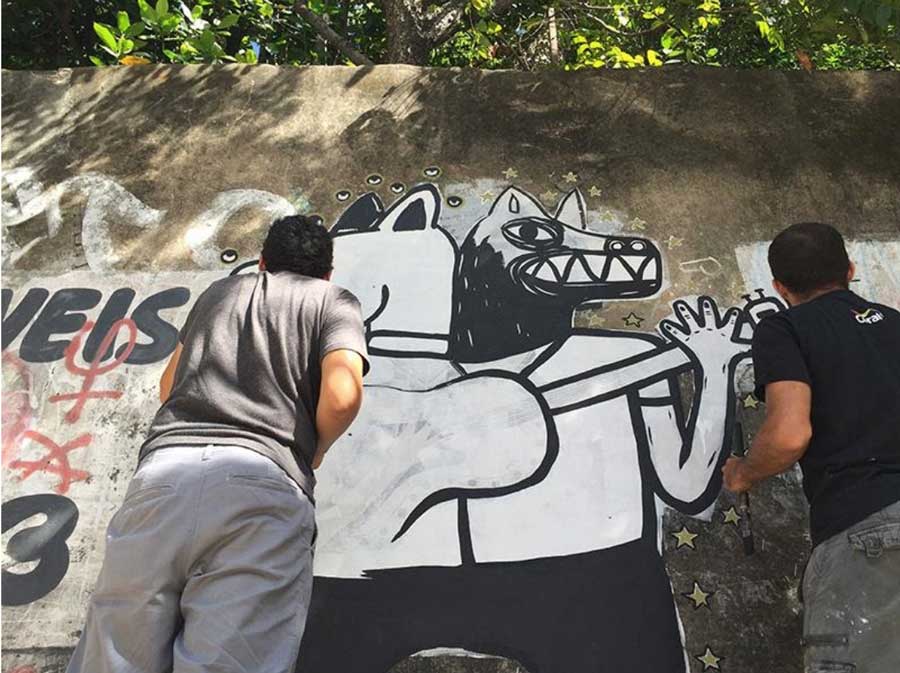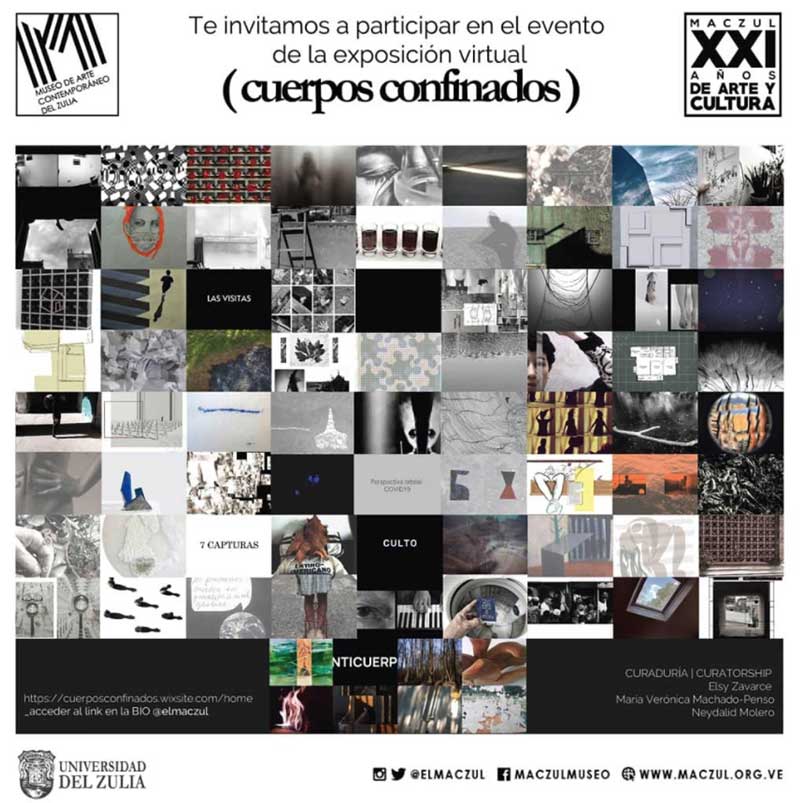A.5 Thinking "Latin American Art/Artists" through Flows and Diasporas, Part 1
Thu Oct 15 / 9:00 – 10:30
voice_chat expiredchairs /
- Gabriela Aceves Sepúlveda, Simon Fraser University
- Analays Alvarez Hernandez, Université de Montréal
Despite its short existence, the International Biennial of Contemporary Art in South America (BIENALSUR) is redefining the traditional model of biennial exhibitions. With an interest in decentralization, inclusivity, and connections, BIENALSUR takes place simultaneously in various cities across the world. Other than connecting people, ideas and works from five continents, this event represents a unique occasion for Latin American artists, and also for those from the diaspora, to come together. Taking inspiration from BIENALSUR, we seek to “think together” Latin America and Latin American diasporas across periods and geographies. We invite papers that address the historical and contemporary presence of Latin American art/artists outside their geopolitical borders; or question the concept of Latin American art/artist through a focus on flows and interactions of humans, capital, things, data, or natural resources; and are related to any topic on art and artists in Latin America, from pre-Columbian to contemporary times.
Gabriela Aceves Sepúlveda is Assistant Professor in the School of Interactive Arts and Technology at Simon Fraser University where she directs the interdisciplinary research and media creation studio cMAS. She is the author of the award-winning monograph Women Made Visible: Feminist Art and Media in post-1968 Mexico (University of Nebraska Press, 2019) and several peer-reviewed articles, book chapters, and research-creation projects on feminist media art in Latin America. She also works on video and performance. Her artistic work has been shown in various venues across Canada and Mexico since 1990.
Analays Alvarez Hernandez is an art historian and independent curator. Her research focuses on contemporary art, with an emphasis on commemorative public art, diasporic communities, Latino Canadian art, and curating. She has notably received a bachelor’s degree in Art History from the Universidad de La Habana, and her doctorate from Université du Québec à Montréal. From 2016 to 2018, she held a position as Postdoctoral Fellow in the Department of Art History at the University of Toronto. Currently, she is Assistant Professor at the Université de Montréal and member of Culture Montréal’s Commission permanente de l’art public.

Gallo Preto, El xolo y a la Ursa (work in progress). Photo: Sarah Shamash, 2016.
A.5.1 Situated and Diasporic Flows in Galo Preto Coletivo
Sarah Shamash, Emily Carr University of Art + Design; University of British Columbia
In many Latin American syncretic religions, the rooster is viewed as a symbol of transformation. Also, the rooster is used as a sacrificial animal to satisfy deities. Galo Preto, the Portuguese words for Black Rooster, is the name of a two-person art collective formed in Olinda, Pernambuco, Brazil in 2016. This paper will examine the artistic flows and exchanges between the two artists: Carlos Colín and Bozó Bacamarte - one Mexican born, living in Vancouver, and the other, a Brazilian artist living in Recife, Brazil. This paper will draw from a documentary film made by the author on Galo Preto that further examines the role of visual languages rooted in Latin American philosophies and aesthetics as these languages cross geopolitical borders through interdisciplinary practices of art making. In particular, I will investigate how situated knowledge is produced in contexts of diaspora and within each artist’s respective location and conditions of production. Further, I will examine how these knowledges are embodied and exchanged through artmaking. While the circuits of spatio-temporal locations of the artists’ transit from North to South, from Mexico to Canada to Brazil, Galo Preto’s aesthetics and ethos are deeply rooted in Latin American social movements, concepts, and histories. Specifically, Bozó has an ever-growing significance in the Brazilian (street) art scene, with an aesthetic signature grounded in the Movimento Armorial, an artistic initiative arising from Brazil’s northeast popular culture. Carlos’ more conceptually based and object oriented practice is heavily influenced by Latin American philosophies and his Mexica heritage. This intellectual, cultural combination all fused together when the two artists met in Olinda, Brazil in 2016, generating original artworks. I will investigate the collective’s creative process and a representative artwork titled El Xolo e a La Ursa, to shed light on translocal Latin American flows of thought, translation, and artmaking.
Sarah Shamash lives on the unceded and ancestral territories of the Musqueam, Squamish, and Tsleil Waututh First Nations in what is known as Vancouver. She is a filmmaker and artist and has recently (2020) completed her PhD in Interdisciplinary Studies at the University of British Columbia (UBC). Her dissertation was on a case study of the Video nas aldeias film archive in Brazil. Since the 2000s she has been exhibiting her work in art venues and film festivals. Her interdisciplinary research creation centers on feminist politics and geographies of identity, liberation, and relationships of body and space. She works as an artist/filmmaker, she teaches film studies, and programs films as an independent curator. Her work as an artist, researcher, educator, and programmer can be understood as interconnected and whole; they revolve around media art as a pluriversal form with decolonial potential.

Invitation for the Zoom meeting of Confined Bodies Virtual Exhibition. Curators: Machado, Molero, Zavarce. MACZUL. Graphic design: Stefania Hernandez.
A.5.2 Diaspora, Displacement and Confinement: Confident Bodies a Virtual Exhibition
Elsy Zavarce, Concordia University
How a community of practice can help build a sense of belonging, resilience, and resistance? How decolonial curatorial approaches can help us build communities in the time of Covid19? In March 2018, the exhibition CUERPO EN CUESTIÓN opened at the Museo de Arte Contemporáneo del Zulia (MACZUL) Venezuela. On that occasion, 18 multidisciplinary works by 15 artists were shown to the public. This exhibition was the beginning of a conversation motivated by the call of the artists and curators Molero, Machado and Zavarce, taking as a starting point Neydalid Molero's book (2006): Identidades corporales alternativas: perspectivas de la autorepresentación en el arte contemporáneo.
Two years later they meet again in the virtual space, from three different geo-coordinated locations: Argentina, Colombia, Canada, to resume the conversation this time within the conditions of the global pandemic and their condition as migrants. During the lockdown, in collaboration with the Zulia Contemporary Museum (MACZUL), we developed a digital platform entitled Confined bodies in which we explored the experiences of our confined bodies during Covid-19. Artists were invited to reflect on the state of our sudden hyperconnected world, and the simultaneous expansion and containment of our daily dynamics, all of them inscribed in a digital enclosure.
This paper will present a discussion of the artwork presented in the exhibition Confined Bodies from a social pedagogical and decolonial curatorial frameworks. But also, will present further questions inspired by our own personal journeys. We now find our confined bodies inquiring deeply about how our own displacement is transforming in the times of Covid-19. How does confinement manifest in a body that is already displaced? How many territories define and delineate our identities? How many territories can a body live in at once? Are we physical bodies from geographic territories? Or are we now virtual bodies from digital territories?
Elsy Zavarce is a multidisciplinary visual artist, interdisciplinary researcher, and emeritus professor at the University of Zulia. Born in Canada, grew up in Venezuela. She has many research publications, as a result of funded research, someshow her interest in the comprehension of contemporary art and its visibility, other publications demonstrate her pedagogical approach as a founder of the Graphic Design School of Zulia University. Elsy has a background as a professor of Architecture and Graphic Design in Venezuela and is currently focusing on museology as a way of looking to develop inspirational curatorial projects and educational toolkits for her practice. As PhD student at Concordia University she is interested in researching how communities of practice can help build a sense of belonging, resilience, and resistance?
A.5.3 Photographie Ex-appropriation. Thresholds about the Idea of Latin American Photography.
Juliana Robles de la Pava, Universidad Nacional de Tres de Febrero; Universidad de Buenos Aires
Latin American photography idea has become a wandering that makes it impossible to delimit its original emanation center. Paradoxically, its delimitation has been drawn throughout the 20th century outside the limits of what we know as Latin America. In this sense, the idea of Latin American photography does not seem to point to a property that configures the exceptional nature of Latin American photographic production, but rather, to an instance of contamination, disidentity, interaction and flow from which it becomes possible to interrogate what we enunciate as Latin American art and photography. This paper will address some historical and contemporary approaches to the idea of Latin American photography to indicate how its constitution, as a strategic concept of dissemination of the visual culture of the region, has been woven on a threshold that exceeds geopolitical or national limits. In this sense, it will be effective to understand the concept of Latin American photography as a diasporic concept, that is, as a threshold, a gap, or an instance of non-belonging in which it is possible to think from the materiality of the images themselves. To address this approach, we will review the ideas formulated around this concept in the Pan-American context, the disquisitions in the Coloquios Latinoamericanos de Fotografía in the late 1970s, and then question the essentialization formulated in contemporary exhibitions of Latin American photography. This review will allow us to understand to what extent decentralization is a helpful path to approach the constitutive difference that nests in the idea of Latin America.
Juliana Robles de la Pava is doctoral fellow of the Consejo Nacional de Investigaciones Científicas y Técnicas (CONICET) at the Centro de Investigación en Arte, Materia y Cultura, IIAC-UNTREF, Argentina. She is Ph.D. candidate in History and Theory of the Arts at the Universidad de Buenos Aires (UBA). She received her MA in curatorial Studies from the Universidad Nacional de Tres de Febrero (UNTREF). Her thesis on the materiality of CONFERENCE | 2020 | CONGRÈS space considered how photographic displays of exhibitions can be shaped as of from the definition of photographic materiality. She holds a BA in Arts (Art History) from de Universidad de Buenos Aires. She is author of the articles La fotografía informalista de Jorge Roiger (2016); Etnografía ecoestética: Bienales en la escena argentina del arte contemporáneo (2019) and, Retóricas expositivas en la construcción de imaginarios sobre la fotografía latinoamericana (2020).



